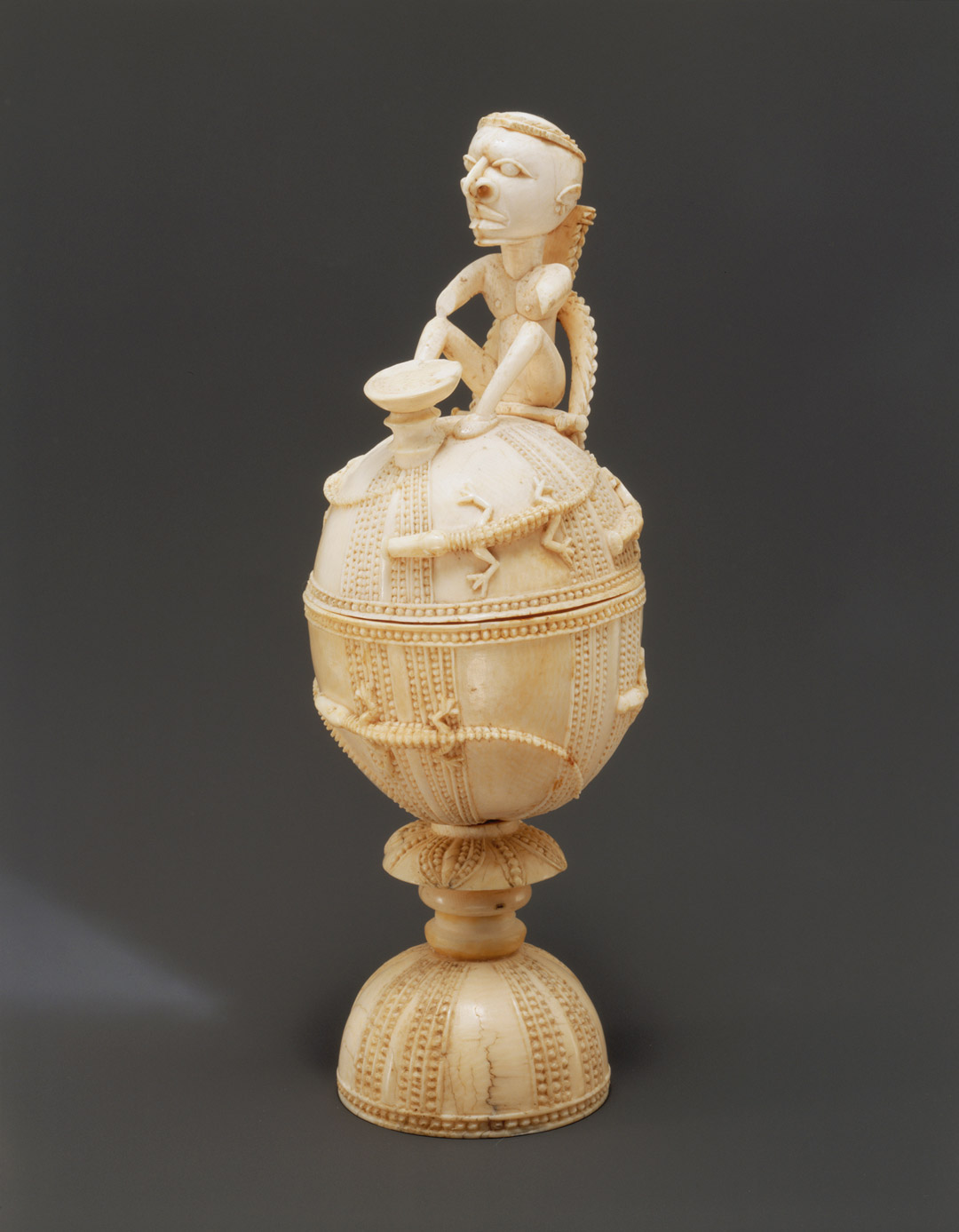Object of the Week: Salt cellar
In the 15th-16th century, this ivory salt cellar would have belonged to a wealthy European collector, adding precious salt to their meals or variety to their cabinet of curiosities. The crocodile motif, masterfully carved by Sapi artisans in Sierra Leone, would have evoked the “newly discovered” African continent. We can understand this combination of foreign taste and local craftsmanship as an early form of commissioned “tourist art,” and exotic items like this one became increasingly popular in European collections.
The Portuguese arrived on the shores of Sierra Leone in 1460, which began a short period of relative cross-cultural harmony. In the 15th and 16th centuries, urban life on the West African coast did not look vastly different from urban life in Lisbon, so Portuguese merchants were quickly able to establish relationships, trading for vast amounts of gold, ivory, pepper, and other goods. Curiosities like this salt cellar were also valuable African exports, so Portuguese merchants commissioned items to sell to collectors in Portugal. Artistic patronage structures in Sierra Leone were similar to those in Europe, which meant Portuguese patrons could request specific designs be used in commissioned works, often bringing an etching or other model to demonstrate their wishes. This exchange of ideas led to a confluence of European and African designs in many of these exported ivories.
Emma George Ross writes that ivories like this one have been described as “emerging from a period that predates power imbalances and racist imagery. Therefore, the shared African and Portuguese aesthetic that they reflect is one that was achieved through the negotiation of equals.”1 However, the rosy picture of “negotiation among equals” is at odds with the 175,000 enslaved people who were taken from Africa to Europe and the Americas during this early period of Afro-Portuguese contact. The slave trade grew exponentially with increasing Dutch and British involvement in the 17th century.
Because of the consequent power imbalance and rise of white supremacy, the African makers of carved ivories in European princely collections were often erased. Only in the 20th century did researchers rediscover the Sapi and Benin origins of certain carved ivories, returning this cross-cultural collaboration to the art historical narrative and establishing the category of “Afro-Portuguese ivories.”
– Linnea Hodge, Former (and much-missed) SAM Curatorial Division Coordinator
1 Ross, Emma George. “Afro-Portuguese Ivories.” In Heilbrunn Timeline of Art History. New York: The Metropolitan Museum of Art, 2000–. http://www.metmuseum.org/toah/hd/apiv/hd_apiv.htm (October 2002)
Sources:
Bortolot, Alexander Ives. “The Transatlantic Slave Trade.” In Heilbrunn Timeline of Art History. New York: The Metropolitan Museum of Art, 2000–. http://www.metmuseum.org/toah/hd/slav/hd_slav.htm (October 2003)
Clarke, Christa. “Lidded Saltcellar.” Khan Academy. https://www.khanacademy.org/humanities/art-africa/west-africa/sierra-leone/a/lidded-saltcellar
Ross, Emma George. “Afro-Portuguese Ivories.” In Heilbrunn Timeline of Art History. New York: The Metropolitan Museum of Art, 2000–. http://www.metmuseum.org/toah/hd/apiv/hd_apiv.htm (October 2002)
Ross, Emma George. “The Portuguese in Africa, 1415–1600.” In Heilbrunn Timeline of Art History. New York: The Metropolitan Museum of Art, 2000–. http://www.metmuseum.org/toah/hd/agex/hd_agex.htm (October 2002)
Image: Salt cellar, ca. 1490-1530, Sierra Leone, ivory, 8 1/8 x 2 9/16 x 2 11/16 in., Nasli and Alice Heeramaneck Collection, 68.31.
